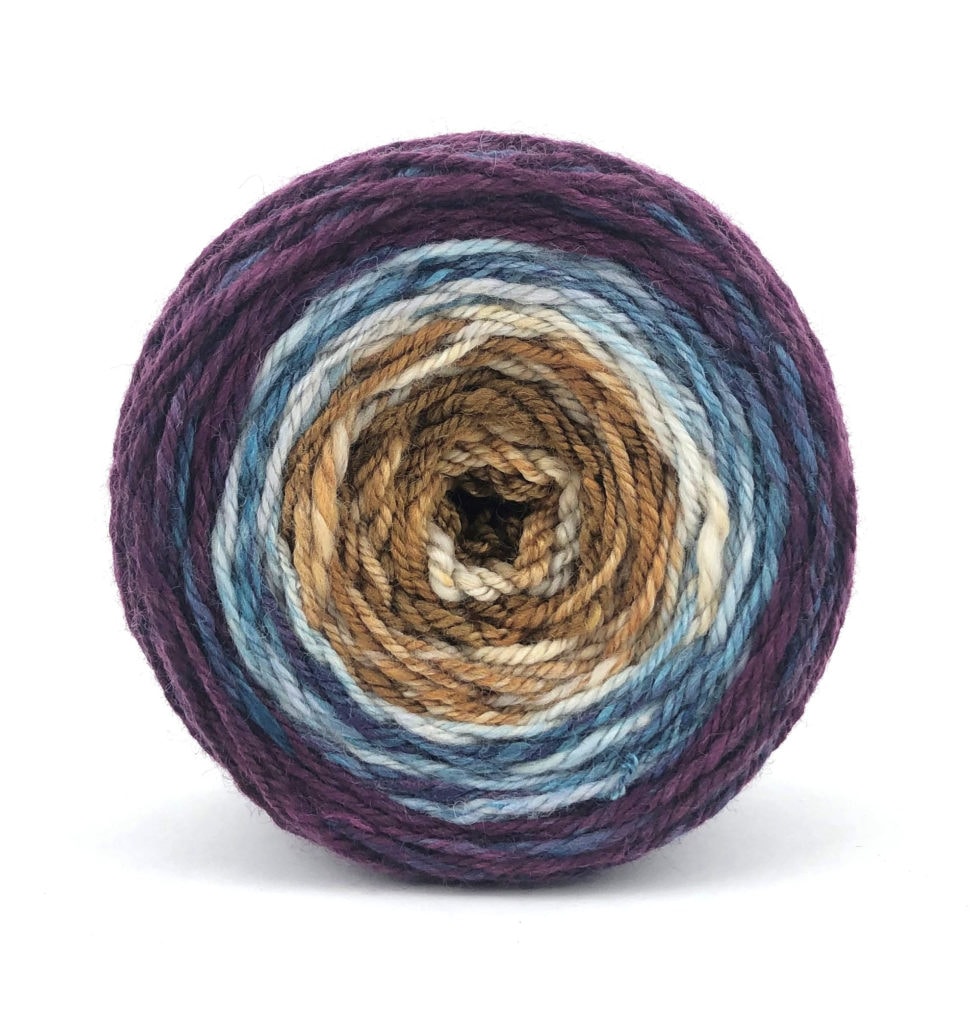Confident Spinning with Color: Designing from the End
By Deb Gerish
True confession: I am not a designer or an artist. I make stuff from other people's patterns. My training didn't happen in art school; it comes from a few spinning classes, many books and articles about spinning, and tons of trial and error (mostly error). So when my boss asked me to host a spin-along for the Barry's Jubilee braid, my first reaction was "gulp." Then I calmed down and started planning—from the end!
First decision: This fiber, in these colors, would make a stunning cowl or small wrap.* Once I knew what I would make, every other aspect of the project started falling into place.
An accessory worn on the neck and shoulders draws attention to the face, so its colors should flatter the wearer's skin tone and hair. The blues and purples of Barry's Jubilee are not just my favorite colors, they look good with my fair skin, white-grey hair, and blue eyes. But the golden browns, beautiful in and of themselves, don't do much for my complexion.
Second decision: I would keep the colors distinct so blues and purples could dominate the yarn and the knitted accessory.** The white would form a neutral background and the browns would add bold highlights. Since blue and purple also dominate my wardrobe, this cowl/wrap would work with many outfits, and its brown (nonexistent in my closet) would shake things up. You may want to emphasize other colors or blend them all together. Go crazy! It's your yarn!
I had 2 braids to spin, and I did not even skein-sample them because I wasn't doing anything risky to the colors.
I used the inchworm method for fingering weight singles, spun on the medium whorl of my Matchless. (This is my go-to whorl even for finer yarn, because I tend to overtwist.) I plied with the same whorl, resulting in a yarn of about 10 to 11 wpi (in the neighborhood of DK or worsted weight) at 750 yards per pound. The 4-ounce braid made roughly 188 yards of a 2-ply yarn with long repeats. Though the 2 bobbins were spun from the same end of the braid, their colors do not align perfectly: in some places, the yarn is a solid color and elsewhere there's a barber pole effect.
* This is the third lesson from part 2 of the Spin-along.
** Jillian blended colors in her second braid. In the skein, the browns predominate, while the purples and especially the blues become much more subtle. Her swatch resembles a pointillist painting filled with dots of color. The browns and the white pop out most to my eye, while the purples and blues play supporting roles.
What You'll Need
-
two braids of space-dyed fiber
-
spinning wheel—I used my Matchless
Directions
Spinning As It Comes (Straight)
For the first braid, I defaulted to my usual handling of dyed braids and simply replicated Felicia's color sequence. This involves splitting the braid lengthwise all the way down and spinning each half, beginning at the same end of the braid.
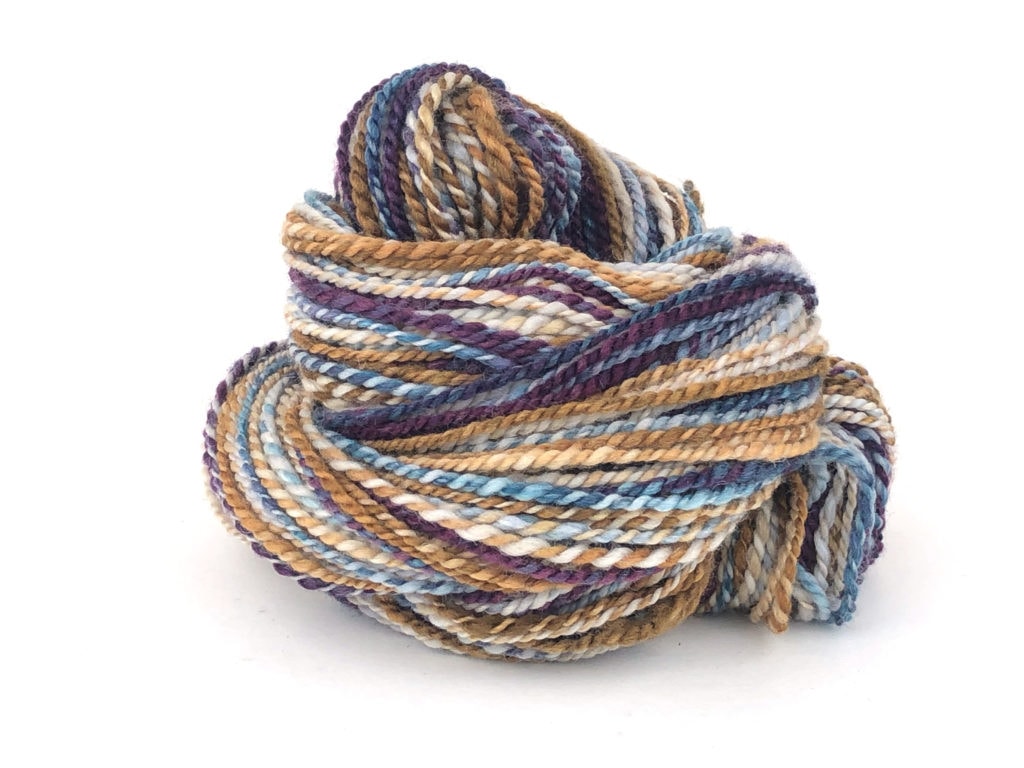
I used the inchworm method for fingering weight singles, spun on the medium whorl of my Matchlhess. (This is my go-to whorl even for finer yarn, because I tend to overtwist.) I plied with the same whorl, resulting in a yarn of about 10 to 11 wpi (in the neighborhood of DK or worsted weight) at 750 yards per pound. The 4-ounce braid made roughly 188 yards of a 2-ply yarn with long repeats. Though the 2 bobbins were spun from the same end of the braid, their colors do not align perfectly: in some places, the yarn is a solid color and elsewhere there's a barber pole effect.
Spinning a Gradient Yarn
For the second braid, I tried something new and made a gradient yarn. I ripped up the braid into clumps of separate colors, though many clumps had a different color on one end.
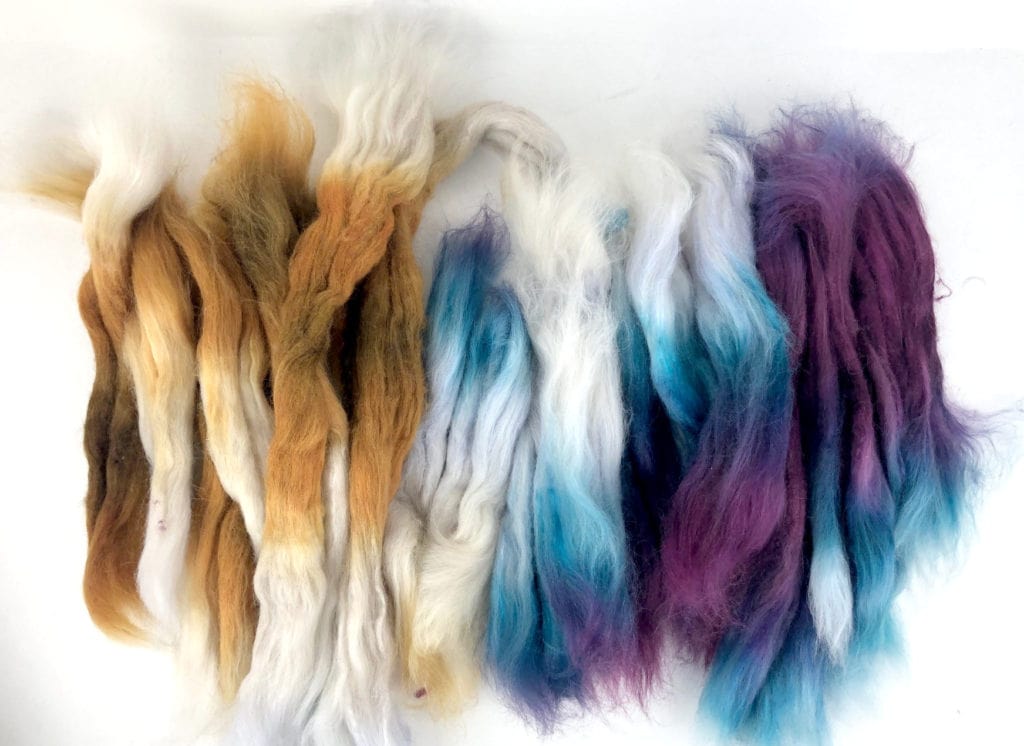
A purist like Jillian would have separated colors more aggressively, but I wanted some contrasting blips within my gradient. Then the clumps got sequenced into a zippered bag: purple, purple-blue, blue, blue-white, white, white-brown, brown. Now at last I could spin!
This time, I inchwormed a laceweight singles using the medium whorl on my Matchless. I chain-plied on the same whorl, generally keeping colors separate but not fussing when they overlapped. The resulting 3-ply yarn is about 13 wpi (sport weight) at 900 ypp; the 4-ounce cake contains about 225 yards. It's a tightly plied, beautifully round yarn, due to the chain-plying. The colors here are much more distinct than in the first yarn, with no repeats. I wet-finished and whacked both skeins before hanging them to dry. They're drapey, smooshy yarns of incredible softness.
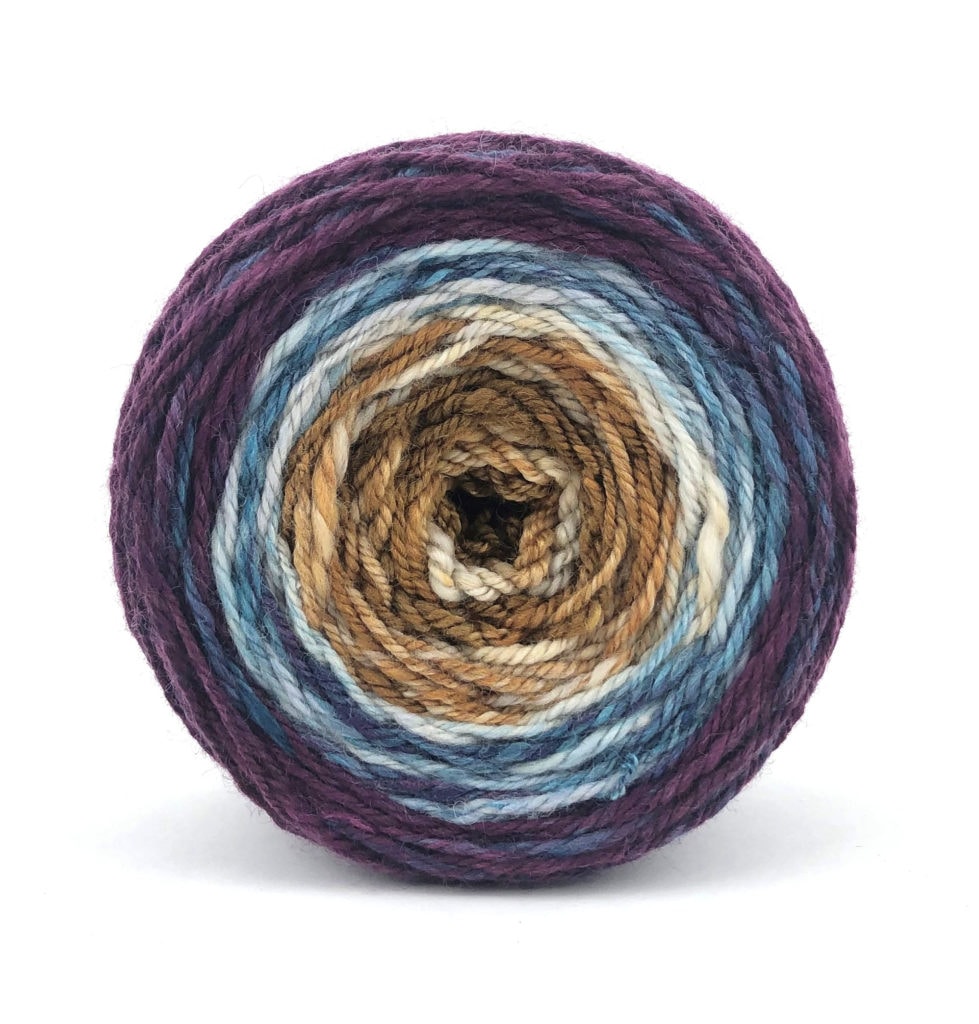
Evaluating the Yarn
The yarn cakes revealed where my yarn designs succeeded and failed. In the 3-ply, each color looks bold with only tiny specks of contrast. There's a lot of brown, but it's all gathered in one part of the skein. In my 2-ply yarn, brown shows up everywhere and dominates the yarn because it dominates the braid I was replicating.
Brown dominates due to its amount and its brightness (intensity). Felicia planned to proportion the colors equally, but to my eye, the amount of brown and of white nearly equals the blue and purple combined. I see a ratio of 1:1:1.5 for brown:white: blue+purple. The unbraided braid also reveals the colors' intensity. The purples recede from view, while the blues and browns pop out. The blues and especially the browns are much brighter, while the purple looks muted. I needed to do something differently to tone down the browns in my 2-ply.
I love both these yarns, even if my design for the 2-ply didn't work out as planned. But it ain't over yet—my fabric samples will reveal new color interactions. I can still create accessories where the blues and purples dominate!
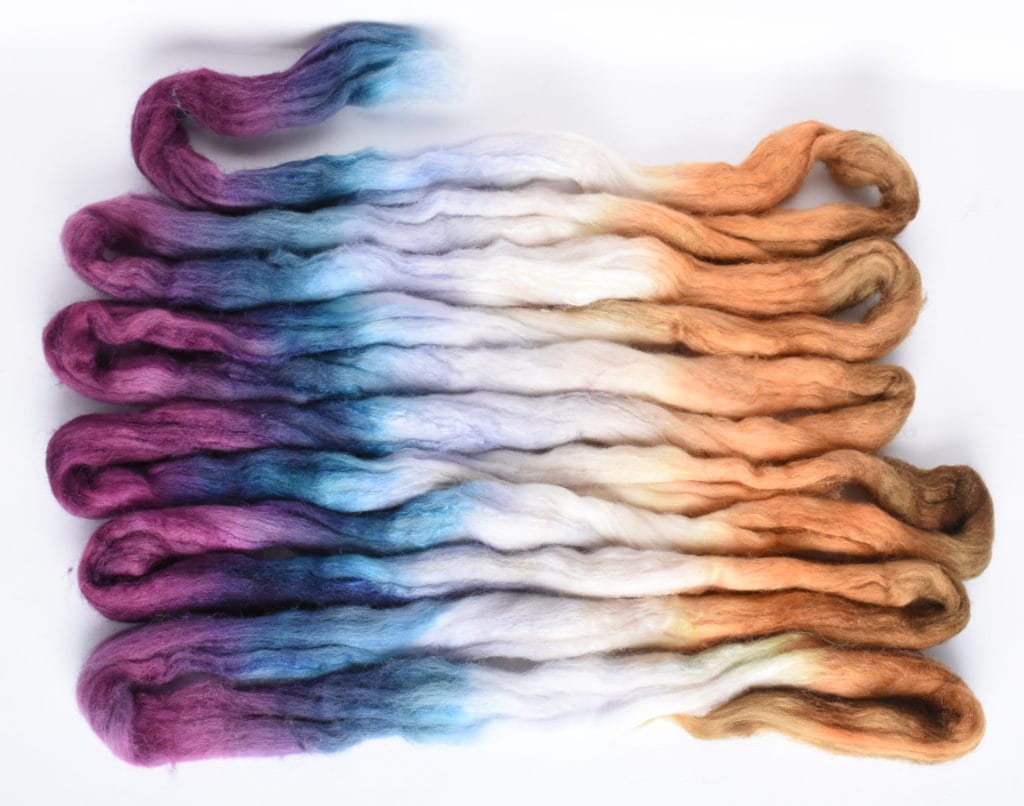
Notes
Note: If you want to try blending colors for any hand-dyed braid, test the color interaction with a cool fold-back trick from Kate Larson, editor of Spinoff: Spin about 10 yards of singles. Unwind an arm’s length, pinch and fold it, then repeat with another arm's length. Repeat this process of unwinding and folding back until all the colors appear or you've run out of singles. Let go of the pinch so all the plies twist around each other. Now you can get a better idea of how the colors will interact.

